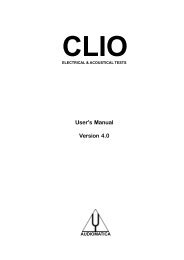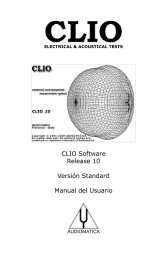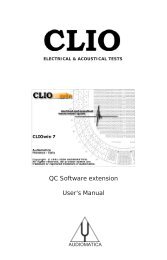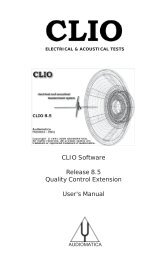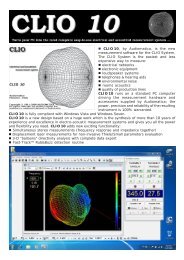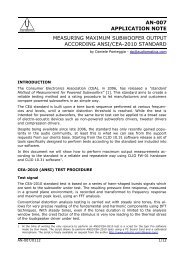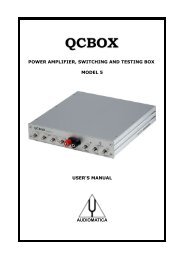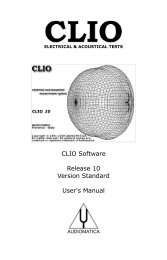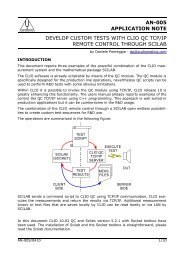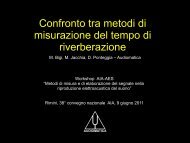CLIOwin 7 PCI User's Manual - Audiomatica
CLIOwin 7 PCI User's Manual - Audiomatica
CLIOwin 7 PCI User's Manual - Audiomatica
You also want an ePaper? Increase the reach of your titles
YUMPU automatically turns print PDFs into web optimized ePapers that Google loves.
10.7 MLS Vs. LOG CHIRP<br />
As anticipated in the introduction, some advise are given to help choosing between MLS<br />
and LOG CHIRP stimuli. Both approach are valid and bring to equivalent results. In both<br />
cases the device we want to measure is assumed to be Linear and time Invariant. This<br />
assumption while reasonably true in general cases in never met in absolute terms. There<br />
is always a certain degree of non linearity and, in less degree, a time variance. The two<br />
approach shows different sensitivity to these facts. Advantage of MLS are that is that<br />
much less computing requiring, historically much more widespread and known and has<br />
a flat frequency energy distribution. The latter feature can be an advantage or not<br />
depending on situation/DUT.<br />
Figure 10.39<br />
In the above figures the spectrum of both signals is showed. As usually signal to noise<br />
ratio get worse at lower frequency, the higher signal energy that LOG CHIRP has here<br />
is an advantage for S/N ratio. If the DUT does not appreciate low frequency high energy<br />
content, i.e. a tweeter, the advantage become a disadvantage.<br />
Also, there is an important difference on how non linearity affects the two procedure.<br />
In MLS distortion transforms itself in noise spread over the whole impulse response while<br />
with LOG CHIRP concentrate itself in single impulses (one for each harmonic) in the tail<br />
of the impulse and can easily be manually removed.<br />
128 Chapter 10 - MLS



